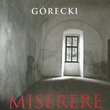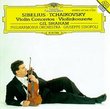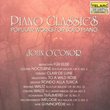| All Artists: Henry Purcell, Rose Consort of Viols Title: Purcell: Fantazias Members Wishing: 0 Total Copies: 0 Label: Naxos Original Release Date: 1/1/1997 Re-Release Date: 10/6/2000 Genre: Classical Styles: Chamber Music, Historical Periods, Baroque (c.1600-1750), Symphonies Number of Discs: 1 SwapaCD Credits: 1 UPC: 730099495721 |
Search - Henry Purcell, Rose Consort of Viols :: Purcell: Fantazias
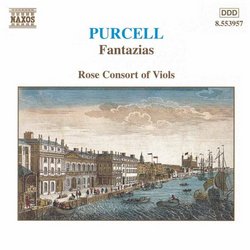 | Henry Purcell, Rose Consort of Viols Purcell: Fantazias Genre: Classical
|
Larger Image |
CD DetailsSimilar CDsSimilarly Requested CDs
|
CD ReviewsForget What Your 'Music Appreciation' Teacher Said Giordano Bruno | Wherever I am, I am. | 02/06/2009 (5 out of 5 stars) "Most music histories would have us believe that the genre of the 'string quartet' sprang full-grown from the forehead of Joseph Haydn, was nurtured to maturity by Wolfgang Mozart, and achieved apotheosis in the works of Beethoven and Schubert. Certainly it is possible to follow the development of the form in Haydn's works, from his earliest quartets, which are little more than violin sonatas with lower strings rather than harpsichord, to his later masterpieces, in which the four instruments function as equals. Nevertheless the string quartet had evolved before, and reached a degree of sophistication that even Mozart never exceeded, not as a suite of movements but rather as a 'set' of fantasies to be played on the "closed consort" of violas da gamba, which were built in various sizes from the viola-sized treble to the extended cello-sized bass. Pieces for gamba consorts were composed in all the musical countries of Europe in the 16th Century. It was in England, however, where the repertoire for gambas evolved most independently and achieved the most complexity. Composers like Tye, Byrd, Gibbons, and Lawes wrote polyphonic consort music of astonishing subtlety and abstract beauty, with each voice sharing in emotional expressivity. The apotheosis of the gamba consort tradition was reached in the Fantazias and 'In Nomines' of Henry Purcell (1659-1695). Listening to this CD of such 'Other String' quartets makes me think of the evolution of winged flight, which has occurred convergently in reptiles, birds, and mammals, with roughly the same genetic architecture building different skeletal solutions. Words can scarcely evoke the evanescent emotional variety of these fantasies, or the modernity of their harmonic resources. The Rose Consort of Viols, on this CD at least, reaches the same elite status as the gamba consorts Fretwork and Phantasm. Though these pieces could no doubt be played on violins and cellos - or saxophones, if you want to push the argument - the Roses leave no doubt for the ears that the gamba is not just a fiddle with frets. The timbre of these gambas is unmistakably different. It's often described as 'silvery', though I don't find it metallic in any way. Gamba overtones just seem to make space for tonal complexities to be heard. Emerging from the 'tenor-structured' musical theory of the late Renaissance, gamba consort music is naturally generous to the bass; the typical quartet 'chest' of gambas used one treble, one tenor and two basses, a formula that Purcell also preferred. Thus the gamba quartet has a dark, meditative, slightly melancholy affect, though Purcell is also capable of lightening the texture with sprightly gigues. If the whole 16th & 17th C repertoire of the closed consort (music for instruments of the same family) is new to you, you couldn't do better than to introduce yourself to it with this CD by the English Roses." Beautiful and expressive performances Steven Guy | Croydon, South Australia | 11/24/2006 (5 out of 5 stars) "This is a superb (and cheap!) recording of some of Purcell's most beautiful, expressive and intimate music. Whilst France was watching big operas with big orchestras, Italians were writing operas and concertos and the Germans and Australians were making very exciting music with strings, brass and woodwind, the English were still composing viol consorts! It is as if the "Renaissance" didn't end in England until sometime late in the 17th century! However, rather than remaining stuck in the past, music in England continued to develop in its own unique way. Purcell's viol consorts are not inferior to the concerti grossi of his Italian contemporary, Arcangelo Corelli, in any way, even though they are ostensively composed in a style which was already obsolete in Italy even in Monteverdi's time 80 years earlier! These works are beautiful, strange, lyrical and sublime and quite unlike any other music from this period in history. Yes, Henry Purcell was a musical genius. There is nothing cheap about this recording. It would still be amongst the best interpretations of these works, and a potential first choice, even if this recording was at a normal full price." Masterpieces from Purcell's 21st year. John Austin | Kangaroo Ground, Australia | 04/01/2004 (5 out of 5 stars) "Purcell's lean and clean musical language is already recognizable in these wonderful works that date from 1680. The 12 fantazias, each about two pages long, are not played in numerical order here, and there are three other similar pieces for consort of viols shuffled in amongst them, providing a CD of 53 minutes duration. The sound of a consort of viols can sometimes be grating and strident. Everything here falls easily on the year. The famed English group, the Rose Consort of Viols, plays with searching intensity, finding the special character in each of these works, and the group's leader, John Bryan, provides the annotations."
|

 Track Listings (15) - Disc #1
Track Listings (15) - Disc #1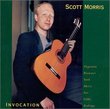
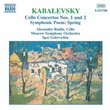


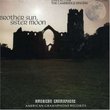

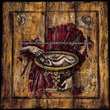
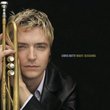

![Across The Universe [Deluxe Edition]](https://nationalbookswap.com/cd//m/51/1251/1241251.jpg)
